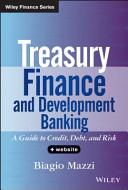Theories and Institutions
Notes on Islamic Economics: Theories and InstitutionsIn this book I present the basic theories and the institutional set up of Islamic economics. It consists of chapters one through eleven. Chapters one and two attempt to answer the questions of 'what is Islamic Economics' and 'why we need to study it', they also discuss issues of definition, scope, sources of knowledge and relevance. The third chapter deals with the basic values and ethical questions of Islamic economics both as a branch of science and as a study of the Islamic economic system. It briefly studies ethical values which affect economic behaviour of men and women like of efficiency, performance, self-reliance, perfection and benevolence. Chapter four discusses the fundamental institutional setup of the Islamic economic system. It argues that the Islamic institutional set up is based on nine pillars which are: 1) Property rights, 2) Exchange and contracts, 3) Economic freedom, 4) Market structure, 5) Wealth and income, 6) State of law, 7) Economic activity of the state, 8) Internal ethical monitor, and 9) Mercy and caring. The next two chapters are devoted to the discussion of the position and place of the state and the private sector in the system and the interrelations between them. The main argument of these chapters is that while the Islamic system adores private ownership and economic freedom, it assigns an important role to the state, in all its branches, and charges it with important functions including the management of public properties and natural resources, which may be huge under certain circumstances. Islamic theories of consumer behavior and producer behavior are discussed in chapters seven and eight. The basic theorem of these two chapters is that human beings are not one dimensional. They rather have a benevolent facet of their behaviors which is present both in the consumers and the firms as well. The analysis in these two chapters tries to take this behavioral element into consideration. Chapter nine revisits the market and deals with the structure of prices at the micro level. It argues that the market reforms introduced by the Prophet, pbuh, himself were very exemplary in setting the desired structure for the market on the basis of fair play of market forces of demand and supply without elements of injustice which may come from monopoly, financial power, unethical practices by some actors or insufficient power of enforcement of exchange contracts. At the same time the Islamic market structure does not assume conditions of perfect competition. The last two chapters are devoted to discussing the effect of market structure on the factors of production and on the allocation process of resources. They also discuss regulations in the market and their extent and effects.In this book as in the other three books of this series, I deal with the fundamental issues of Islamic economics and finance in a realistic yet innovative manner while observing fundamental relations, ties and inspiration from the basic sources of the Islamic religion and its Shari'ah rulings; the Qur'an and the Sunnah.
Notes on Islamic Economics: Theories and InstitutionsIn this book I present the basic theories and the institutional set up of Islamic economics.






